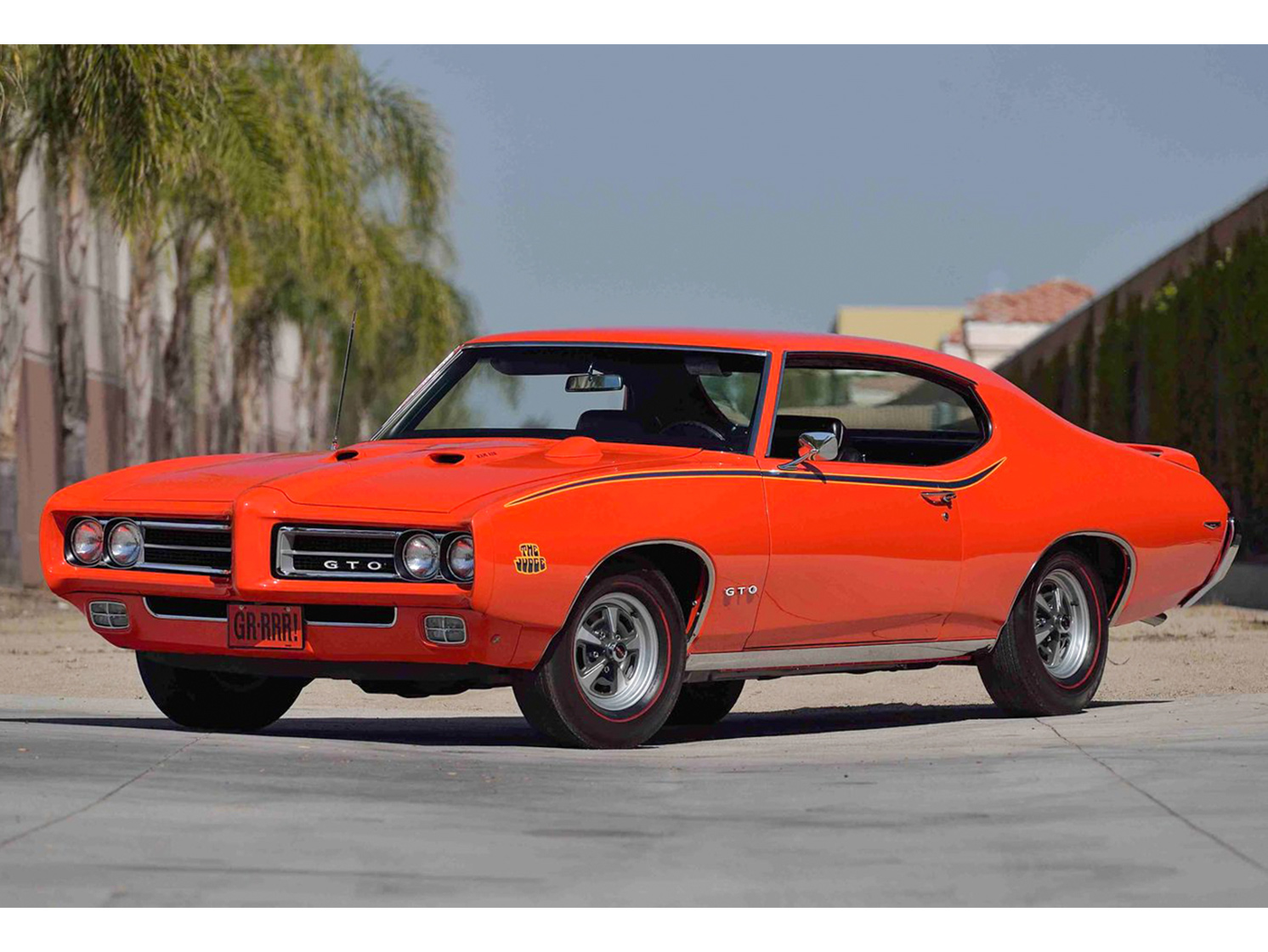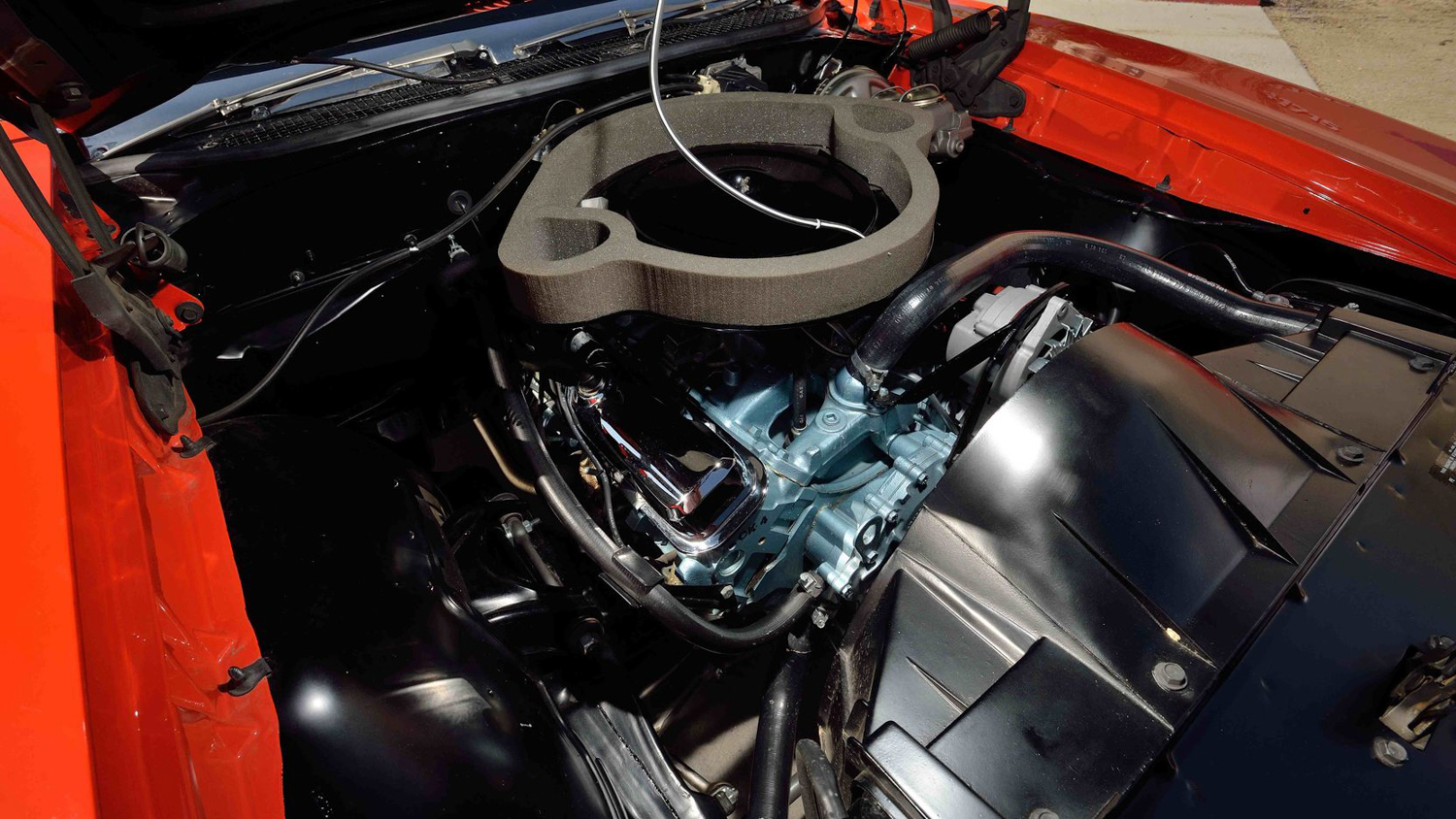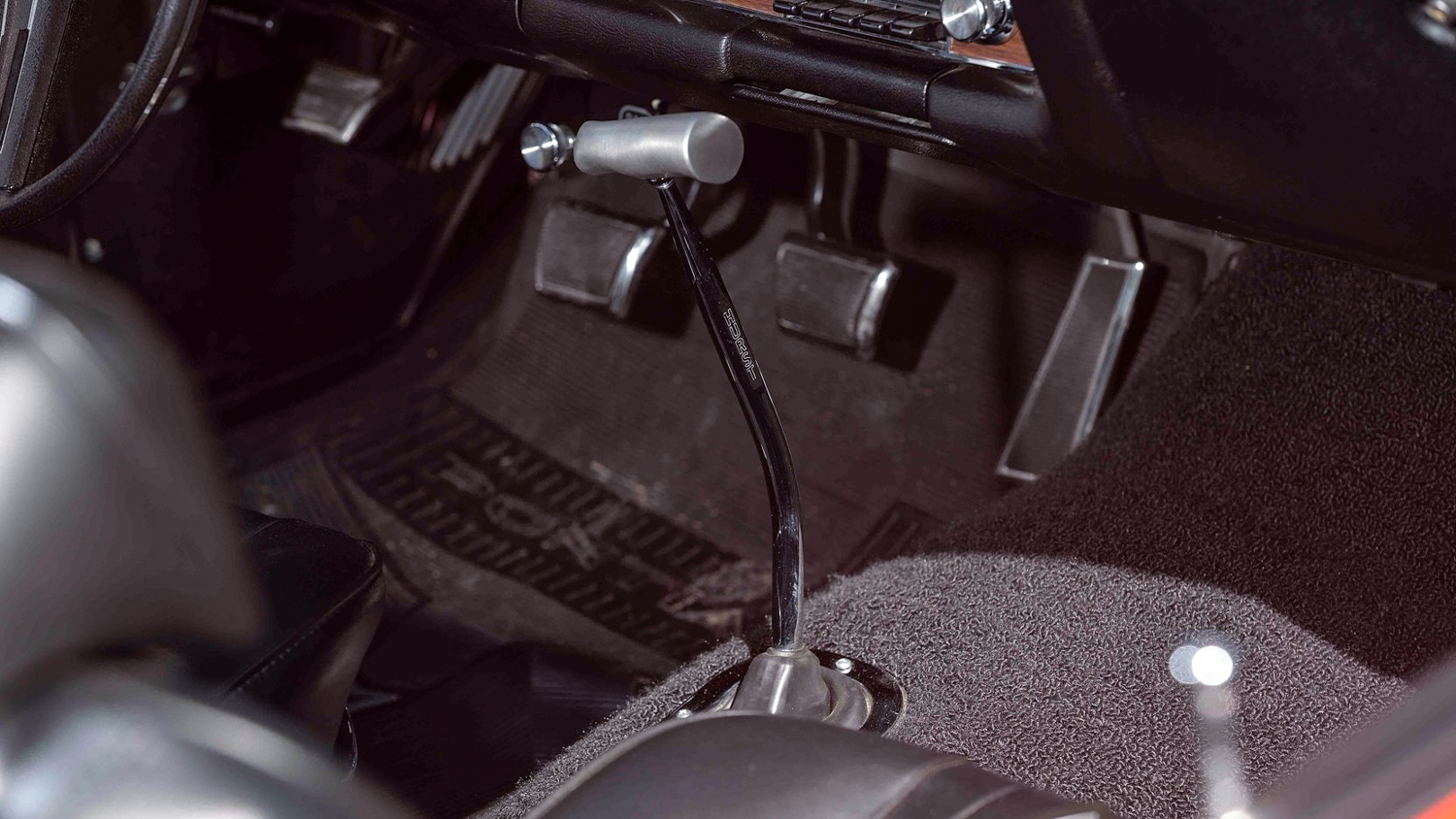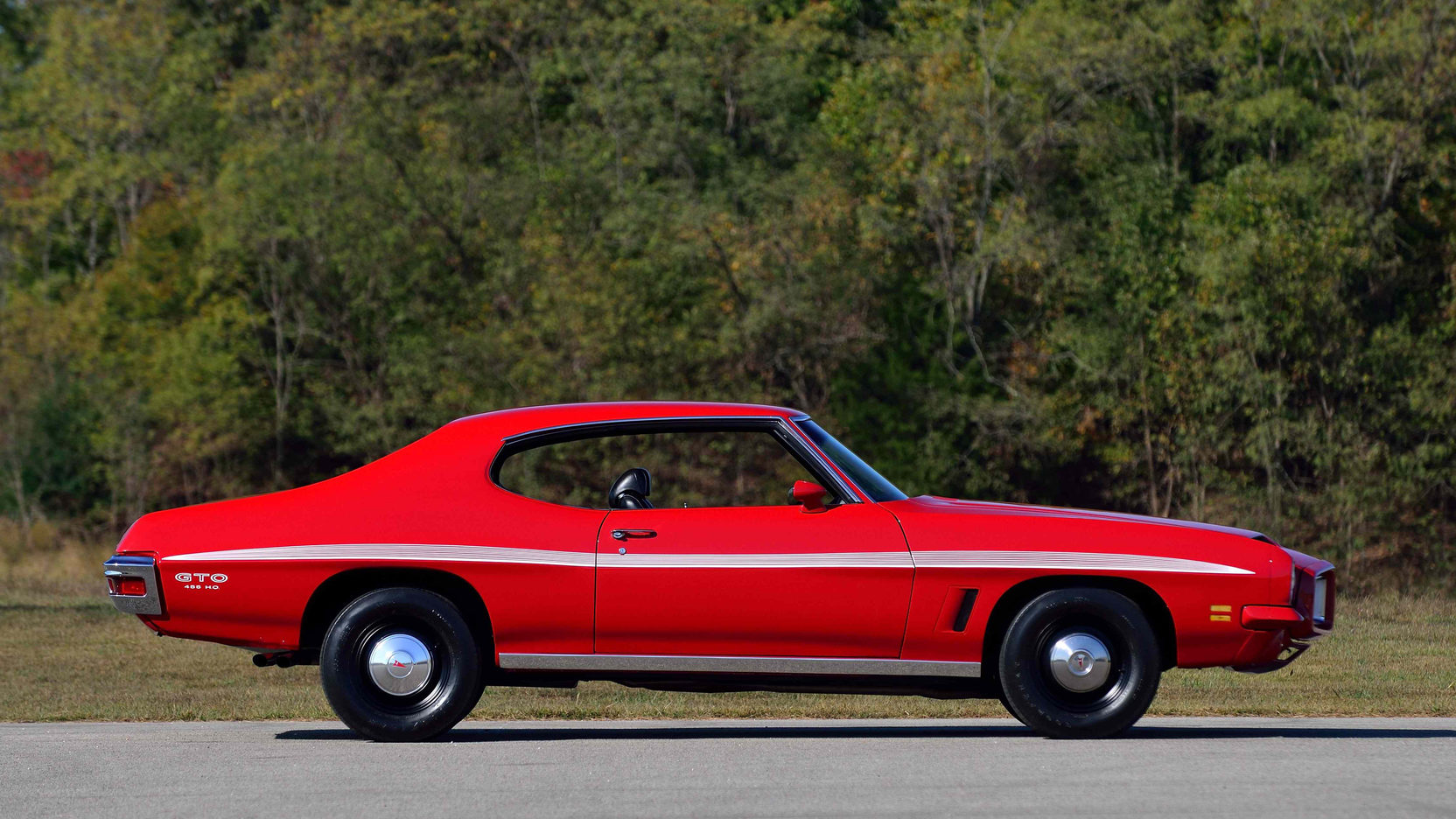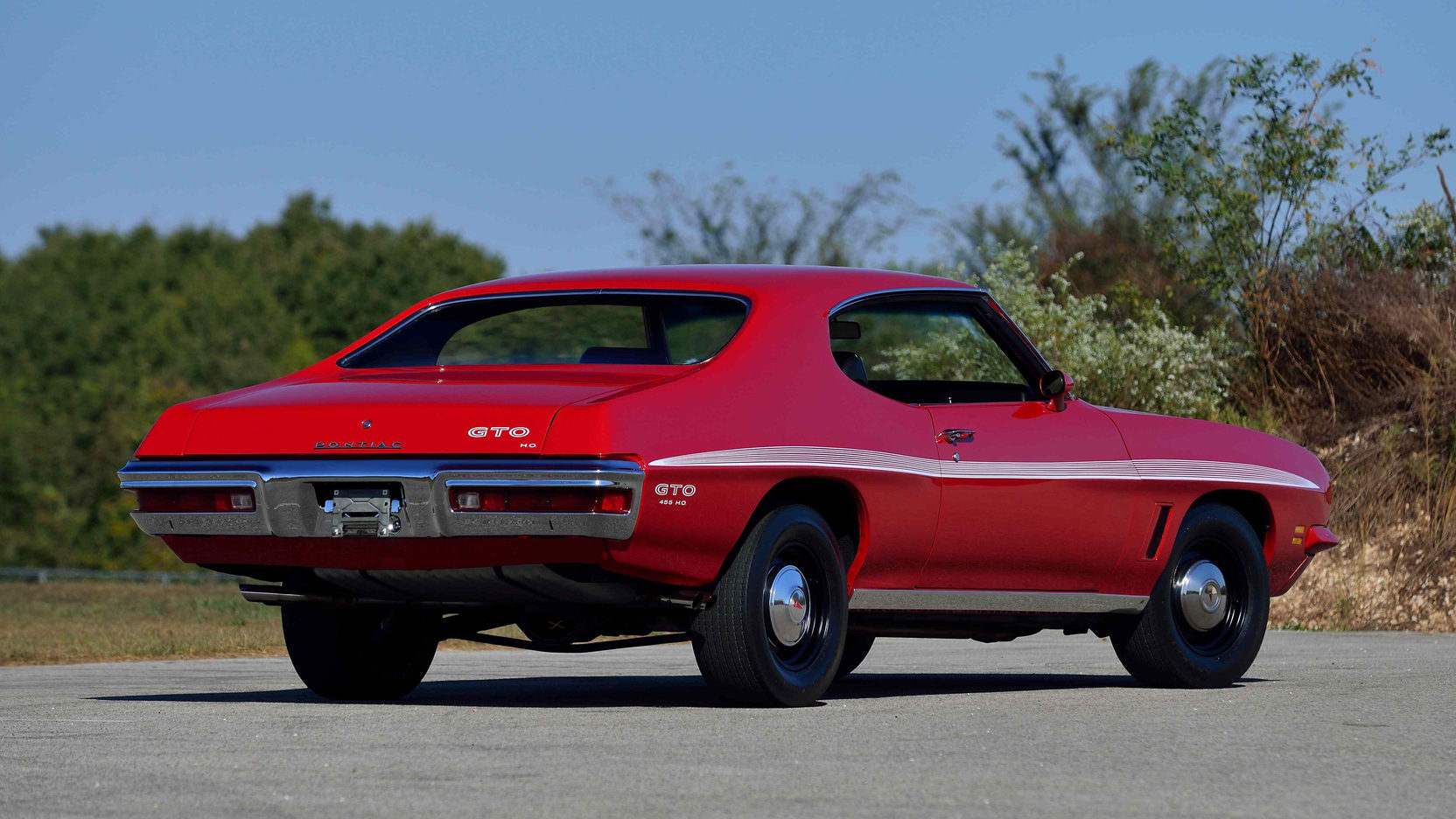Media | Articles
If the 1968-72 Pontiac GTO is a muscle icon, why is its market soft?
The Pontiac GTO of 1968-72 embodies just about everything that was fantastically ridiculous about American muscle cars. Bright colors, loud graphics, monstrous size, powerful engines, a hood-mounted tach, and a rear spoiler that doesn’t really do anything—the GTO’s got the goods. The second-gen GTO also has the pedigree of a great name; the original GTO of 1964 is widely credited with sparking the muscle car craze in the first place. The famous and flashy “Judge” package jazzed up the 1969-71 models, and the Ram Air IV engine was one of the hottest of the day. Indeed, a Ram Air IV GTO convertible is one of the most collectible classic muscle cars out there. So why hasn’t the muscle car market been kind to the GTO lately?
The second-gen GTO is tracking well behind the market average, ranking 14th-lowest of all vehicles we track. Why the downturn? Relative to the rest of the market, prices are stagnant, fewer are being added to insurance policies, buyer interest (measured by insurance quote activity) is way down, and prices on both the auction market and the private market have been fairly weak.
This comes as a bit of a surprise, since more broadly speaking the American muscle car market has been fairly flat, and the few true bright spots are mostly other Pontiacs. The first gen GTO, the 1969-72 and 1973-77 Grand Prix, 1970-81 Trans Am, 1982-92 and 1993-02 Firebird, and even more modern muscle like 2004-06 GTO and 2008-09 G8 all saw at least some appreciation in 2018. Even the related 1968-72 Chevrolet Chevelle has had a much better year in the market than the equivalent GTO.


Marketplace
Buy and sell classics with confidence


There’s no straightforward answer as to what exactly is going on, but one factor that Pontiac enthusiast and Hagerty online editor Brandan Gillogly points to is the upkeep of a car from a defunct brand like Pontiac versus one from Chevrolet. “In terms of Chevelle over GTO, the Chevy will be easier to restore and keep up with. The aftermarket for Pontiac parts is better than it is for Olds, but nothing like Chevrolet.”
Hagerty valuation data specialist Greg Ingold points to a lack of good examples on the market and weak auction results. “I really haven’t seen many good second gen GTOs come to market lately. Nothing with really solid history, options or presentation.” There was a ’70 Judge Ram Air IV convertible that sold for an appropriate $440,000 and a ’71 Judge convertible that sold for a middle-of-the-road $220,000 this year, but these were both at Scottsdale way back in January, and nothing approaching that level of desirability has hit the auction market since.”
Both Gillogly and Ingold agree that the first-gen GTO is both more significant and, although less flashy, a prettier car. “If you want a good performer, buy a 1968-72. If you want a looker, buy a 1964-67,” Ingold says.



Another factor against the Goat is that growth in collector vehicle values are lately focused on lower-cost offerings. Take a look at vintage truck and SUV values, which are on a tear but still relatively affordable in most cases. It’s a similar story for most of the other Pontiacs listed above, along with plenty of other cars that saw their values increase in 2018; there’s simply a lot more room for growth in the lower part of the market.
Second-gen GTOs have been on collectors’ radar for years and are close to being fully priced. Even taking the rare six-figure convertible models out of the equation, average condition #3 (Good) values for second-gen GTOs amount to $41,500, and that’s out of reach for a lot of people.
But even though second gen GTOs haven’t been getting much love this year, especially relative to other Pontiacs, their status as icons of the muscle car era is rock solid and not in any danger. They’re still fast, still fun, and still cool. And while the market for them is seeing some short-term setbacks, it’s unlikely that prices will do anything drastic in the near term.
